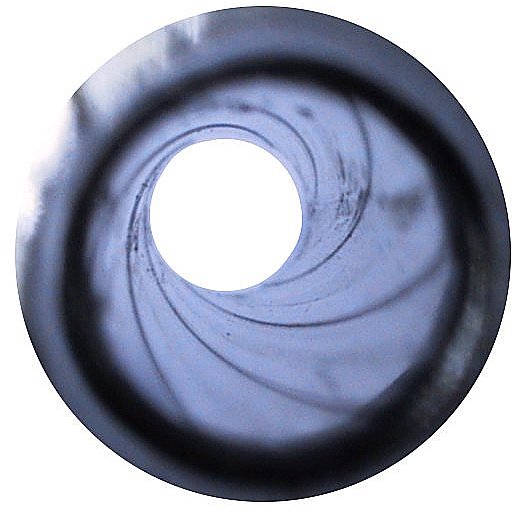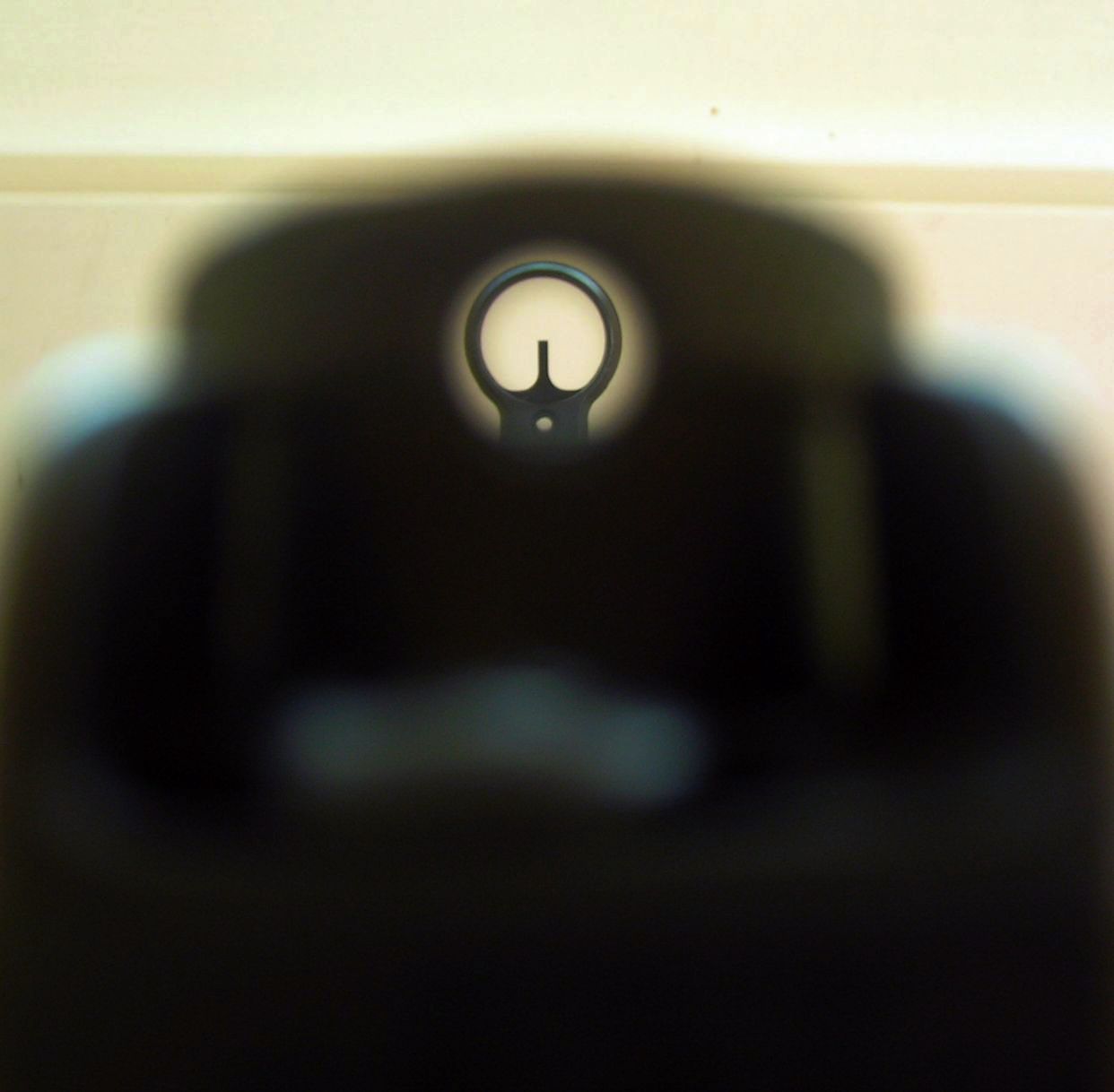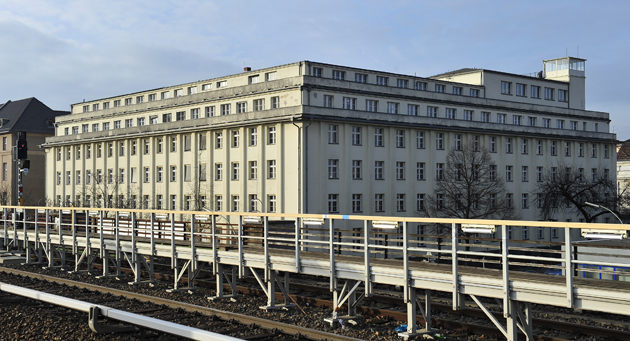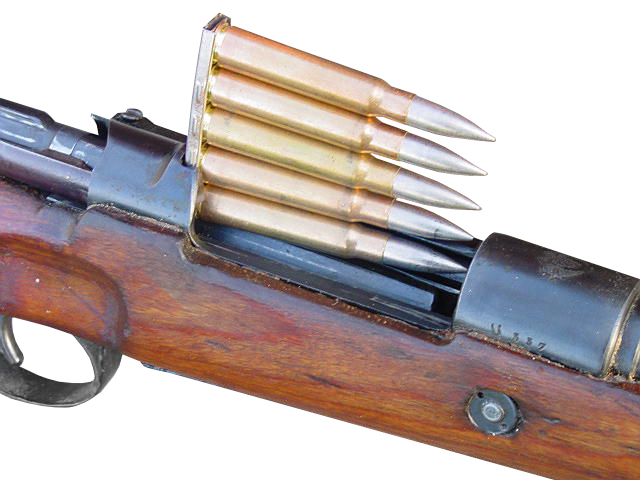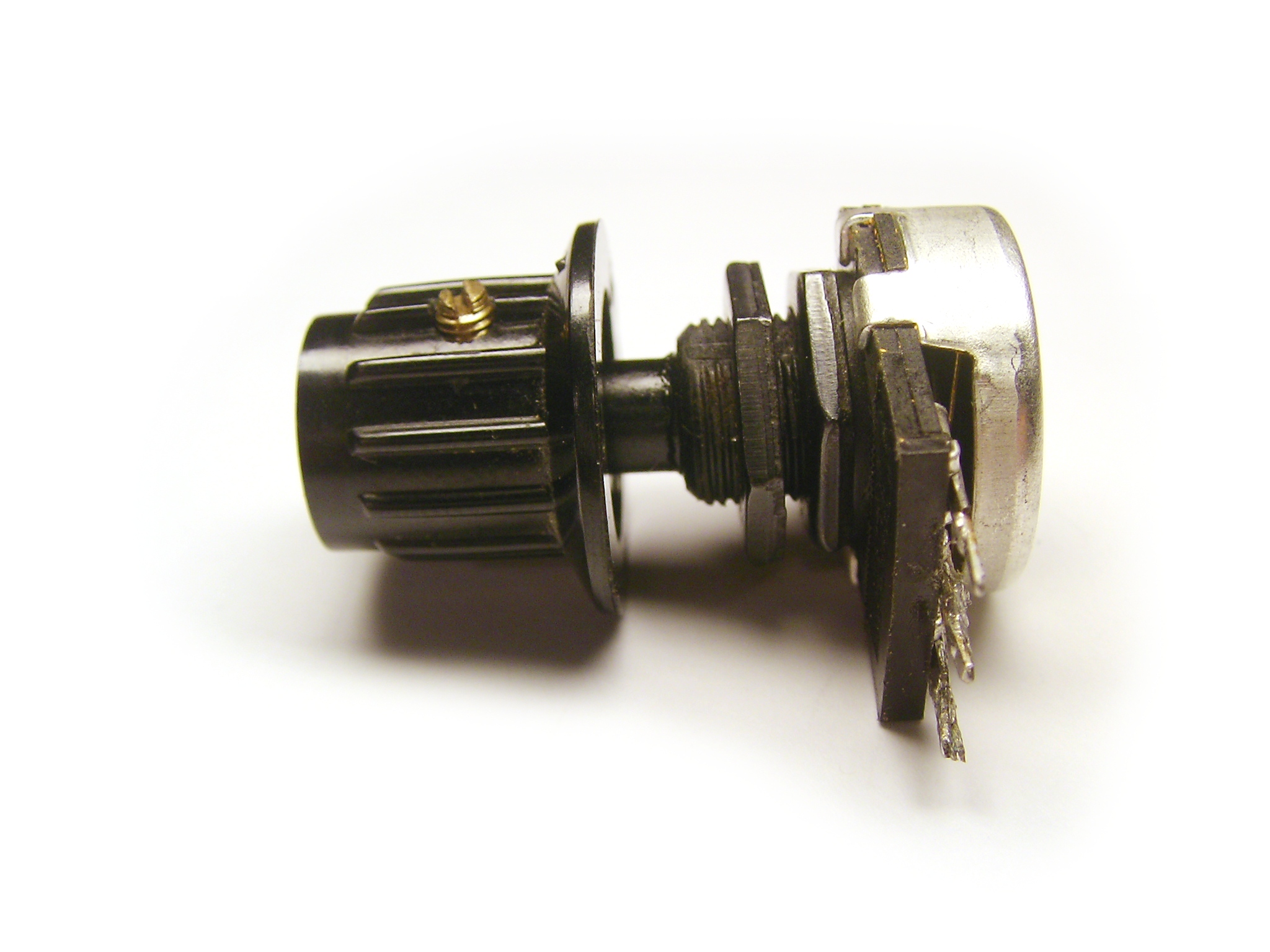|
CZ 455
The CZ 455 is a series of magazine-fed bolt-action rimfire repeating rifle manufactured by the Czech firearms manufacturer Česká Zbrojovka Uherský Brod (abbreviated "CZ-UB", English: Czech Weapons Factory — Uherský Brod) and imported into the United States by CZ-USA. It is a successor of the highly popular CZ 452 rifles, and is chambered for the .22 LR (1:16" twist rate), .22 WMR (1:16" twist) and .17 HMR (1:9" twist) calibers. The CZ 455 is produced with new manufacturing technology capable of closer tolerances for improved accuracy and smoother operation. All CZ 455s have hammer-forged, hand- lapped steel barrels, a trigger that is adjustable for weight of pull, and the capability to interchange barrels in different contours and calibers by simply removing two set screws from the receiver. Design and operation Instead of the barrel being threaded into the receiver, as found on the CZ 452, all CZ 455 models use twin set-screws to fix the barrel in the frame as ... [...More Info...] [...Related Items...] OR: [Wikipedia] [Google] [Baidu] |
Česká Zbrojovka Uherský Brod
Česká zbrojovka a.s. Uherský Brod (CZUB) is an engineering company based in Uherský Brod, Czech Republic whose main activities include the production of service, hunting and sports firearms. It is owned by the Czech holding company Colt CZ Group SE, which also owns other brands with related production programmes. CZUB currently has around 1800 employees. It is one of the highest volume exporters in the Czech Republic, sending its products to more than 100 countries around the world. The company is among the top ten small arms manufacturers in the world and five that manufactures automatic firearms. In 2021, CZUB acquired the Colt's Manufacturing Company; the following year, the parent company changed its name to Colt CZ Group. History In 1919 Jihočeská zbrojovka was founded in Strakonice. Today's Česká zbrojovka a.s. was built as part of a large-scale transfer of strategically important production capacities of the former Czechoslovakia as far as possible from ... [...More Info...] [...Related Items...] OR: [Wikipedia] [Google] [Baidu] |
Rifling
In firearms, rifling is machining helical grooves into the internal (bore) surface of a gun's barrel for the purpose of exerting torque and thus imparting a spin to a projectile around its longitudinal axis during shooting to stabilize the projectile longitudinally by conservation of angular momentum, improving its aerodynamic stability and accuracy over smoothbore designs. Rifling is characterized by its twist rate, which indicates the distance the rifling takes to complete one full revolution, such as "1 turn in 10 inches" (1:10 inches), "1 turn in 254 mm" ("1:254 mm" or "1:25.4 cm)", or the like. Normally, an experienced shooter can infer the units of measurement from the numbers alone. A shorter distance indicates a faster twist, meaning that for a given velocity the projectile will rotate at a higher spin rate. The combination of length, weight, and shape of a projectile determines the twist rate needed to gyroscopically stabilize it &ndash ... [...More Info...] [...Related Items...] OR: [Wikipedia] [Google] [Baidu] |
Iron Sights
Iron sights are a system of physical alignment markers (usually made of metallic material) used as a sighting device to assist the accurate aiming of ranged weapons (such as a firearm, airgun, crossbow or even compound bow), or less commonly as a primitive finder sight for optical telescopes. The earliest sighting device, it relies completely on the viewer's naked eye (mostly under ambient lighting), and is distinctly different to optical sights such as telescopic sights, reflector (reflex) sights, holographic sights and laser sights, which make use of optical manipulation and/or active illumination, as well as the newer optoelectronics, which use digital imaging and even incorporate augmented reality. Iron sights are typically composed of two components mounted perpendicularly above the weapon's bore axis: a rear sight nearer (or ''proximally'') to the shooter's eye, and a front sight farther forward (or ''distally'') near the muzzle. During aiming, the shooter al ... [...More Info...] [...Related Items...] OR: [Wikipedia] [Google] [Baidu] |
Waffenamt
''Waffenamt'' (WaA) was the German Army Weapons Agency. It was the centre for research and development of the Weimar Republic and later the Third Reich for weapons, ammunition and army equipment to the German Reichswehr and then Wehrmacht The ''Wehrmacht'' (, ) were the unified armed forces of Nazi Germany from 1935 to 1945. It consisted of the ''Heer'' (army), the ''Kriegsmarine'' (navy) and the ''Luftwaffe'' (air force). The designation "''Wehrmacht''" replaced the previou .... It was founded 8 November 1919 as ''Reichwaffenamt'' (RWA), and 5 May 1922 the name was changed to ''Heereswaffenamt'' (HWA). The task of overseeing Germany's gigantic pre-World War II rearmament program was given to the ''Heeresabnahmestelle'' (the Army Acceptance Organization, commonly referred to as the ''Abnahme''), a subsidiary of the ''Heereswaffenamt''. By 1940 the ''Abnahme'' consisted of 25,000 personnel in five departments in 16 inspection areas, augmented by specially selected plan ... [...More Info...] [...Related Items...] OR: [Wikipedia] [Google] [Baidu] |
Mauser 98k
The Karabiner 98 kurz (; "carbine 98 short"), often abbreviated Karabiner 98k, Kar98k or K98k and also sometimes incorrectly referred to as a K98 (a K98 is a Polish carbine and copy of the Kar98a), is a bolt-action rifle chambered for the 7.92×57mm Mauser cartridge. It was adopted on 21 June 1935 as the standard service rifle by the German ''Wehrmacht.''K98k Mauser Page Retrieved 28 March 2007. It was one of the final developments in the long line of military rifles. Although supplemented by semi-automatic and fully automatic rifles during World War II, the Karabiner 98k remained the primary German ... [...More Info...] [...Related Items...] OR: [Wikipedia] [Google] [Baidu] |
Protectorate Of Bohemia And Moravia
The Protectorate of Bohemia and Moravia; cs, Protektorát Čechy a Morava; its territory was called by the Nazis ("the rest of Czechia"). was a partially annexed territory of Nazi Germany established on 16 March 1939 following the German occupation of the Czech lands. The protectorate's population was mostly ethnic Czech. After the Munich Agreement of September 1938, Germany had annexed the German-majority Sudetenland from Czechoslovakia. Following the establishment of the independent Slovak Republic on 14 March 1939, and the German occupation of the Czech rump state the next day, German leader Adolf Hitler established the protectorate on 16 March 1939 by a proclamation from Prague Castle. The creation of the protectorate violated the Munich Agreement.Crowhurst, Patrick (2020) ''Hitler and Czechoslovakia in World War II: Domination and Retaliation''. Bloomsbury Academic. p. 96, . The protectorate was nominally autonomous and had a dual system of government, with German ... [...More Info...] [...Related Items...] OR: [Wikipedia] [Google] [Baidu] |
Receiver (firearms)
In firearms terminology, the firearm frame or receiver is the part of a firearm which integrates other components by providing housing (engineering), housing for internal action (firearms), action components such as the hammer (firearms), hammer, bolt (firearms), bolt or breechblock, firing pin and extractor (firearms), extractor, and has screw thread, threaded interfaces for externally attaching ("receiving") components such as the gun barrel, barrel, stock (firearms), stock, trigger (firearms), trigger mechanism and iron sights, iron/sight (device)#Optical sights, optical sights. The receiver is often made of forged, machined, or stamped steel or aluminium; in addition to these traditional materials, modern science and engineering have introduced polymers and sintering, sintered metal powders to receiver construction. Mounting A barrel can be fixed to the receiver using barrel and receiver action threads or similar methods. In US law For the purposes of gun law in the Un ... [...More Info...] [...Related Items...] OR: [Wikipedia] [Google] [Baidu] |
Receiver (firearm)
In firearms terminology, the firearm frame or receiver is the part of a firearm which integrates other components by providing housing for internal action components such as the hammer, bolt or breechblock, firing pin and extractor, and has threaded interfaces for externally attaching ("receiving") components such as the barrel, stock, trigger mechanism and iron/optical sights. The receiver is often made of forged, machined, or stamped steel or aluminium; in addition to these traditional materials, modern science and engineering have introduced polymers and sintered metal powders to receiver construction. Mounting A barrel can be fixed to the receiver using barrel and receiver action threads or similar methods. In US law For the purposes of United States law, the receiver or frame is legally the firearm, and as such it is the controlled part. The definition of which assembly is the legal receiver varies from firearm to firearm, under US law. Generally, the law requ ... [...More Info...] [...Related Items...] OR: [Wikipedia] [Google] [Baidu] |
Set Screw
In American English, a set screw is a screw that is used to secure an object, by pressure and/or friction, within or against another object, such as fixing a pulley or gear to a shaft. A set screw is normally used without a nut (which distinguishes it from a bolt), being screwed instead in a threaded hole drilled in only one of the two objects to be secured. A set screw is often headless and threaded along its entire length, so that it will sit entirely inside that hole; in which case it may be called a grub screw or blind screw. Once fully and firmly screwed into the first object, the projecting tip of the set screw presses hard against the second object, acting like a clamp. The second object may have a machined detent (recess) to ensure that it cannot slide under the tip of the screw. On a shaft, this may be simply a flattened area. A set screw may have any type of drive, such as hex or square head, slot, or recessed --- cross (Phillips), hex (Allen), star (Torx), or ... [...More Info...] [...Related Items...] OR: [Wikipedia] [Google] [Baidu] |
Trigger (firearms)
A trigger is a mechanism that actuates the function of a ranged weapon such as a firearm, airgun, crossbow, or speargun. The word may also be used to describe a switch that initiates the operation of other non-shooting devices such as a trap, a power tool or a quick release. A small amount of energy applied to the trigger leads to the release of much more energy. Most triggers use a small flattened lever (called the ''trigger blade'') depressed by the index finger, but some weapons such as the M2 Browning machine gun or the Iron Horse TOR ("thumb-operated receiver") use a push-button-like thumb-actuated trigger design, and others like the Springfield Armory M6 Scout use a squeeze-bar trigger similar to the "ticklers" on medieval European crossbows. Although the word "trigger" technically implies the entire mechanism (known as the ''trigger group''), colloquially it is usually used to refer specifically to the trigger blade. Most firearm triggers are "single-action", ... [...More Info...] [...Related Items...] OR: [Wikipedia] [Google] [Baidu] |
Gun Barrel
A gun barrel is a crucial part of gun-type weapons such as small arms, small firearms, artillery pieces, and air guns. It is the straight shooting tube, usually made of rigid high-strength metal, through which a contained rapid expansion of high-pressure gas(es) is used to propel a projectile out of the front end (muzzle (firearms), muzzle) at a high velocity. The hollow interior of the barrel is called the bore, and the diameter of the bore is called its caliber, usually measured in inches or millimetres. The first firearms were made at a time when metallurgy was not advanced enough to cast tubes capable of withstanding the explosive forces of early cannons, so the pipe (often built from staves of metal) needed to be braced periodically along its length for structural reinforcement, producing an appearance somewhat reminiscent of storage barrels being stacked together, hence the English name.''A History of Warfare'' - John Keegan, Keegan, John, Vintage 1993. History Gun bar ... [...More Info...] [...Related Items...] OR: [Wikipedia] [Google] [Baidu] |
Lapping
Lapping is a machining process in which two surfaces are rubbed together with an abrasive between them, by hand movement or using a machine. Lapping often follows other subtractive processes with more aggressive material removal as a first step, such as milling and/or grinding. Lapping can take two forms. The first type of lapping (traditionally often called grinding), involves rubbing a brittle material such as glass against a surface such as iron or glass itself (also known as the "lap" or grinding tool) with an abrasive such as aluminum oxide, jeweller's rouge, optician's rouge, emery, silicon carbide, diamond, etc., between them. This produces microscopic conchoidal fractures as the abrasive rolls about between the two surfaces and removes material from both. The other form of lapping involves a softer material such as pitch or a ceramic for the lap, which is "charged" with the abrasive. The lap is then used to cut a harder material—the workpiece. The abrasive embe ... [...More Info...] [...Related Items...] OR: [Wikipedia] [Google] [Baidu] |

